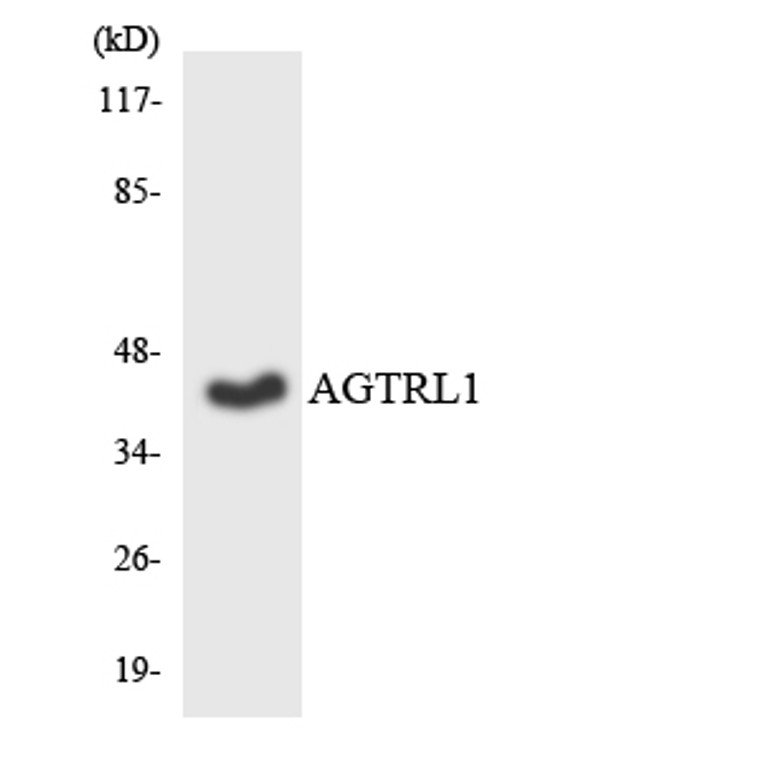| Host: |
Rabbit |
| Applications: |
WB/IHC/IF/ELISA |
| Reactivity: |
Human/Rat/Mouse |
| Note: |
STRICTLY FOR FURTHER SCIENTIFIC RESEARCH USE ONLY (RUO). MUST NOT TO BE USED IN DIAGNOSTIC OR THERAPEUTIC APPLICATIONS. |
| Short Description: |
Rabbit polyclonal antibody anti-Apelin receptor (141-190 aa) is suitable for use in Western Blot, Immunohistochemistry, Immunofluorescence and ELISA research applications. |
| Clonality: |
Polyclonal |
| Conjugation: |
Unconjugated |
| Isotype: |
IgG |
| Formulation: |
Liquid in PBS containing 50% Glycerol, 0.5% BSA and 0.02% Sodium Azide. |
| Purification: |
The antibody was affinity-purified from rabbit antiserum by affinity-chromatography using epitope-specific immunogen. |
| Concentration: |
1 mg/mL |
| Dilution Range: |
WB 1:500-1:2000IHC 1:100-1:300IF 1:200-1:1000ELISA 1:10000 |
| Storage Instruction: |
Store at-20°C for up to 1 year from the date of receipt, and avoid repeat freeze-thaw cycles. |
| Gene Symbol: |
APLNR |
| Gene ID: |
187 |
| Uniprot ID: |
APJ_HUMAN |
| Immunogen Region: |
141-190 aa |
| Specificity: |
APLNR Polyclonal Antibody detects endogenous levels of APLNR protein. |
| Immunogen: |
The antiserum was produced against synthesized peptide derived from the human AGTRL1 at the amino acid range 141-190 |
| Function | Receptor for apelin receptor early endogenous ligand (APELA) and apelin (APLN) hormones coupled to G proteins that inhibit adenylate cyclase activity. Plays a key role in early development such as gastrulation, blood vessels formation and heart morphogenesis by acting as a receptor for APELA hormone. May promote angioblast migration toward the embryonic midline, i.e. the position of the future vessel formation, during vasculogenesis. Promotes sinus venosus (SV)-derived endothelial cells migration into the developing heart to promote coronary blood vessel development. Also plays a role in various processes in adults such as regulation of blood vessel formation, blood pressure, heart contractility and heart failure. (Microbial infection) Alternative coreceptor with CD4 for HIV-1 infection.may be involved in the development of AIDS dementia. |
| Protein Name | Apelin ReceptorAngiotensin Receptor-Like 1G-Protein Coupled Receptor ApjG-Protein Coupled Receptor Hg11 |
| Database Links | Reactome: R-HSA-375276Reactome: R-HSA-418594 |
| Cellular Localisation | Cell MembraneAfter Exposure To Apelin (Apln)Internalized From The Cell Surface Into An Endosomal Recycling CompartmentFrom Where It Is Recycled To The Cell MembraneAfter Exposure To Apelin Receptor Early Endogenous Ligand (Apela) |
| Alternative Antibody Names | Anti-Apelin Receptor antibodyAnti-Angiotensin Receptor-Like 1 antibodyAnti-G-Protein Coupled Receptor Apj antibodyAnti-G-Protein Coupled Receptor Hg11 antibodyAnti-APLNR antibodyAnti-AGTRL1 antibodyAnti-APJ antibody |
Information sourced from Uniprot.org
12 months for antibodies. 6 months for ELISA Kits. Please see website T&Cs for further guidance











